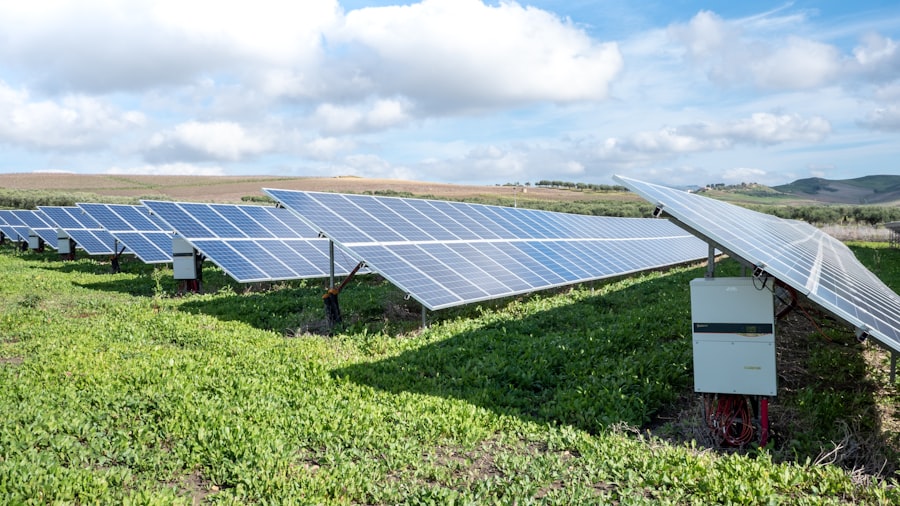Green bonds are a specific category of fixed-income securities designed to fund projects that have positive environmental impacts. These bonds are issued by various entities, including governments, municipalities, and corporations, with the explicit purpose of raising capital for initiatives that contribute to sustainability. The projects financed by green bonds can range from renewable energy installations, such as solar and wind farms, to energy efficiency improvements in buildings, sustainable waste management systems, and even conservation efforts aimed at preserving biodiversity.
The concept of green bonds emerged in the early 2000s, gaining significant traction in the following decade as awareness of climate change and environmental degradation increased. The first green bond was issued by the European Investment Bank in 2007, setting a precedent for future issuances. Since then, the market has expanded rapidly, with various frameworks and standards established to ensure transparency and accountability in how the proceeds from these bonds are utilized.
The Green Bond Principles (GBP), established by the International Capital Market Association (ICMA), provide guidelines for issuers to follow, ensuring that the funds raised are indeed directed toward environmentally beneficial projects.
The Benefits of Investing in Green Bonds
Investing in green bonds offers a multitude of benefits that appeal to both individual and institutional investors. One of the most significant advantages is the alignment with ethical and sustainable investment goals. As global awareness of climate change and environmental issues grows, many investors are seeking ways to contribute positively to society while also achieving financial returns.
Green bonds provide an avenue for investors to support projects that aim to mitigate climate change, promote renewable energy, and foster sustainable development. In addition to ethical considerations, green bonds often come with attractive financial features. Many green bonds are issued by reputable entities with strong credit ratings, which can provide a level of security for investors.
Furthermore, the demand for green investments has been on the rise, leading to competitive pricing and potentially lower yields compared to traditional bonds. However, this demand can also drive up the value of green bonds over time, offering capital appreciation opportunities. Additionally, some governments offer tax incentives for investing in green bonds, further enhancing their appeal as a viable investment option.
The Risks of Investing in Green Bonds

While green bonds present numerous benefits, they are not without risks. One of the primary concerns is the potential for “greenwashing,” where issuers may exaggerate or misrepresent the environmental benefits of their projects. This can lead to a situation where investors believe they are supporting genuinely sustainable initiatives when, in reality, the projects may not deliver the promised environmental outcomes.
To mitigate this risk, investors must conduct thorough due diligence and seek out bonds that adhere to established standards and frameworks. Another risk associated with green bonds is market volatility. Like all fixed-income securities, green bonds are subject to interest rate fluctuations.
When interest rates rise, bond prices typically fall, which can impact the value of an investor’s holdings. Additionally, the relatively nascent market for green bonds means that liquidity can be a concern; some green bonds may not trade as frequently as traditional bonds, making it challenging for investors to sell their holdings without incurring significant price concessions.
How to Evaluate Green Bonds
| Criteria | Metrics |
|---|---|
| Use of Proceeds | Percentage allocated to green projects |
| Project Evaluation | Evaluation of environmental impact |
| Issuer’s Green Strategy | Issuer’s commitment to sustainability |
| Reporting | Transparency in reporting on green projects |
Evaluating green bonds requires a multifaceted approach that considers both financial metrics and environmental impact assessments. Investors should begin by examining the creditworthiness of the issuer, which can be assessed through credit ratings provided by agencies such as Moody’s or Standard & Poor’s. A strong credit rating indicates a lower risk of default and provides a level of assurance regarding the issuer’s ability to meet its financial obligations.
Beyond financial metrics, it is crucial to assess the environmental integrity of the projects being financed. Investors should look for transparency in how proceeds are allocated and whether the projects align with recognized sustainability standards. The Green Bond Principles offer a framework for evaluating these aspects, emphasizing the importance of clear reporting on project outcomes and impacts.
Additionally, third-party verification from independent organizations can provide an extra layer of assurance regarding the environmental claims made by issuers.
The Performance of Green Bonds in the Market
The performance of green bonds has garnered significant attention from investors and analysts alike. Over recent years, studies have shown that green bonds can perform comparably or even outperform traditional bonds in certain market conditions. For instance, during periods of heightened interest in sustainable investing, green bonds have often seen increased demand, leading to price appreciation and tighter spreads compared to conventional fixed-income securities.
Moreover, as institutional investors increasingly incorporate environmental, social, and governance (ESG) criteria into their investment strategies, the demand for green bonds is expected to continue growing. This trend is supported by a broader shift toward sustainable finance across global markets. Research indicates that portfolios incorporating ESG factors tend to exhibit lower volatility and better risk-adjusted returns over time.
As such, green bonds may not only serve as a tool for achieving sustainability goals but also as a strategic component of a well-rounded investment portfolio.
The Impact of Green Bonds on the Environment

The environmental impact of green bonds is one of their most compelling features. By directing capital toward projects that promote sustainability, these financial instruments play a crucial role in addressing pressing global challenges such as climate change and resource depletion. For example, funds raised through green bonds have been instrumental in financing large-scale renewable energy projects that reduce reliance on fossil fuels and lower greenhouse gas emissions.
In addition to renewable energy initiatives, green bonds have also supported projects aimed at improving energy efficiency in buildings and infrastructure. These efforts not only contribute to reduced energy consumption but also enhance resilience against climate-related risks. Furthermore, investments in sustainable agriculture and forestry through green bonds can help preserve ecosystems and promote biodiversity conservation.
The cumulative effect of these projects can lead to significant positive outcomes for both local communities and the planet as a whole.
How Green Bonds Fit into a Diversified Investment Portfolio
Incorporating green bonds into a diversified investment portfolio can enhance both financial performance and social responsibility. Diversification is a fundamental principle of investing that aims to spread risk across various asset classes and sectors. By adding green bonds to a portfolio traditionally composed of equities and conventional fixed-income securities, investors can achieve greater exposure to sustainable investments while potentially benefiting from their unique risk-return profile.
Green bonds can serve as a stabilizing force within a portfolio during periods of market volatility. Their fixed-income nature provides regular income streams through interest payments while also offering capital preservation features. Additionally, as more investors prioritize sustainability in their investment decisions, green bonds may experience increased demand, further enhancing their value over time.
This alignment with broader market trends makes them an attractive option for those looking to balance financial objectives with ethical considerations.
Is Investing in Green Bonds Worth It?
Investing in green bonds presents a compelling opportunity for those looking to align their financial goals with their values regarding sustainability and environmental stewardship. While there are inherent risks associated with this asset class—such as potential greenwashing and market volatility—the benefits often outweigh these concerns for many investors. The growing demand for sustainable investments indicates that green bonds are likely to play an increasingly important role in global finance.
As investors become more discerning about where they allocate their capital, understanding how to evaluate green bonds effectively will be crucial. By focusing on both financial performance and environmental impact, investors can make informed decisions that contribute positively to society while also achieving their investment objectives. Ultimately, whether or not investing in green bonds is worth it will depend on individual circumstances and priorities; however, their potential for positive change makes them an appealing option in today’s investment landscape.
FAQs
What are green bonds?
Green bonds are a type of fixed-income instrument specifically earmarked to raise money for climate and environmental projects. These projects can include renewable energy, energy efficiency, pollution prevention, and sustainable waste management.
How do green bonds work?
Green bonds work like regular bonds, but the proceeds are used exclusively for projects with environmental benefits. Investors who purchase green bonds are essentially lending money to the issuer in exchange for periodic interest payments and the return of the bond’s face value at maturity.
Are green bonds worth investing in?
Investing in green bonds can be worth it for investors who are looking to align their investment portfolios with their environmental values. Green bonds can also offer diversification and potential financial returns, although investors should carefully evaluate the specific bond’s terms and the issuer’s creditworthiness.
What are the benefits of investing in green bonds?
Investing in green bonds can help finance projects that contribute to environmental sustainability and climate change mitigation. Additionally, green bonds can provide investors with an opportunity to support these initiatives while potentially earning a financial return.
What are the risks of investing in green bonds?
As with any investment, green bonds carry certain risks, including interest rate risk, credit risk, and liquidity risk. Additionally, the “green” label of a bond may not always guarantee the environmental impact of the projects funded, so investors should conduct thorough due diligence.
How can I invest in green bonds?
Investors can purchase green bonds through their brokerage accounts, financial advisors, or directly from issuers. Some mutual funds and exchange-traded funds (ETFs) also specialize in green bonds, providing investors with diversified exposure to this asset class.


